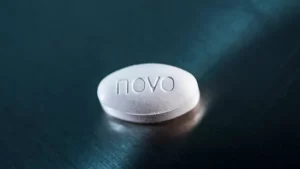Victoza Pen: Dosage, Insulin Alternative for Diabetes Drug Dosing
HOME | DIABETES EDUCATION | WHAT IS VICTOZA PEN? DOSAGE, INSULIN ALTERNATIVE FOR DIABETES
Victoza is a prescription drug used to treat type 2 diabetes and reduce the risk of heart failure. By incorporating Victoza into your daily routine alongside a balanced diet and exercise, you can effectively manage your condition.
Victoza is an alternative to insulin for diabetes drug dosing. It helps control blood sugar levels and can lower the chances of cardiovascular problems. Take control of your diabetes management journey with Victoza.
Key Takeaways; What is Victoza? How Does Victoza Work? Victoza Side Effects
- Victoza is a prescription drug used for the management of type 2 diabetes.
- It helps control blood sugar levels and reduces the risk of heart failure.
- Victoza is an alternative to insulin for diabetes drug dosing, offering dosage flexibility based on individual needs.
- While Victoza is not approved for weight loss, some individuals may experience weight loss while using it for diabetes management.
Overview of Taking Victoza for Diabetes
Victoza is a medication prescribed as an alternative to insulin for adults with type 2 diabetes mellitus. It is used as an adjunct to diet and exercise to improve glycemic control. The initial dose of Victoza is 0.6 mg subcutaneously once a day for one week.
After that, the dose can be increased to 1.2 mg once a day, and further to 1.8 mg once a day for additional glycemic control. Pediatric patients who are at least 10 years old can start with a 0.6 mg dose for at least one week and increase to 1.2 mg if more control is needed. If further control is required after 1.2 mg, a dose of 1.8 mg can be considered.
Victoza reduced the risk of heart attack, stroke and death from cardiovascular issues in patients with Type 2 diabetes when compared to a placebo.
Victoza is available in a multidose pen that delivers doses of 0.6 mg, 1.2 mg, or 1.8 mg. It is important to note that Victoza is not approved for weight loss, although some individuals may experience weight loss while using it to manage type 2 diabetes. Patients should consult their healthcare provider for more information on Victoza’s dosage, side effects, and risks.
Dosage Forms and Strengths When Injecting Victoza
When injecting Victoza, you will need to consider the dosage forms and strengths available. Victoza is available as a subcutaneous solution multidose pen, delivering doses of 0.6 mg, 1.2 mg, or 1.8 mg. This allows for flexibility in adjusting the dosage based on your individual needs. Here are four important points to keep in mind when it comes to the dosage forms and strengths of Victoza:
1. Starting dose: The usual starting dose of Victoza is 0.6 mg once daily. This initial dose helps your healthcare provider assess how your body responds to the medication.
2. Dose adjustment: Depending on your blood sugar levels, your healthcare provider may increase your Victoza dosage to 1.2 mg or 1.8 mg. The goal is to find the right dosage that effectively manages your diabetes.
3. Pediatric patients: For children, the starting dose of Victoza is 0.6 mg once daily. It can be increased to 1.2 mg/day and then to 1.8 mg/day if additional glycemic control is needed. The dosage may be adjusted over several weeks, and changes in body mass index (BMI) should be evaluated after 12 weeks on the maintenance dose.
4. Saxenda: It’s important to note that Saxenda, another medication, also uses a similar subcutaneous solution multidose pen. It delivers doses ranging from 0.6 mg to 3 mg. However, for diabetes management, Victoza is the preferred choice.
Understanding the dosage forms and strengths of Victoza is crucial for effectively managing your diabetes. Work closely with your healthcare provider to determine the right dosage for you.
Read Also – How Can You Take Victoza for Weight Loss in 2024?
Starting Dose and Titration When Using Victoza
When using Victoza, determining the starting dose and titration is important for optimal diabetes management. The initial dose is 0.6 mg once daily for one week. After this, the dose can be increased to 1.2 mg once daily if further glycemic control is needed. If more control is required, the dose can be increased to 1.8 mg once daily. This personalized dosing is based on individual blood sugar levels and treatment goals.
Consulting with your healthcare provider is crucial in determining the appropriate starting dose and titration schedule. Factors such as current blood sugar levels, overall health, and response to the medication will be considered. Regular monitoring of blood sugar levels is necessary to assess the effectiveness of Victoza and make any necessary adjustments.
Following the recommended starting dose and titration schedule can optimize diabetes management with Victoza. Victoza is an insulin alternative that offers an additional treatment option for individuals with type 2 diabetes, including pediatric patients aged 10 years and older. It effectively improves blood sugar levels and can be a valuable tool in your diabetes management plan.
Victoza as an Insulin Alternative
Victoza is an alternative to insulin for managing blood sugar levels in individuals with type 2 diabetes. This medication improves glycemic control and reduces the risk of major cardiovascular events in patients with type 2 diabetes and heart failure. Here are four important points about using Victoza as an insulin alternative:
-
Dosage flexibility: Victoza has a starting dosage of 0.6 mg once daily, which can be increased to 1.2 mg or 1.8 mg based on blood sugar levels. Different doses allow for personalized treatment.
-
Additional glycemic control: Victoza is an alternative option for patients without adequate blood sugar control with insulin therapy. It helps lower the risk of complications associated with diabetes mellitus.
-
Reduced risk of low blood sugar: Victoza can help decrease the risk of hypoglycemia compared to certain insulin treatments. This makes it suitable for individuals at risk for hypoglycemic episodes.
-
Safety considerations: Victoza is contraindicated in patients with type 1 diabetes and those with a history of multiple endocrine neoplasia syndrome type 2 or medullary thyroid carcinoma (MTC). Healthcare professionals should consider these factors when prescribing Victoza as an insulin alternative.
Managing Blood Sugar Levels With Victoza Injection
To manage your blood sugar levels, administer the appropriate dosage of Victoza injection as prescribed by your healthcare professional. Victoza is an insulin alternative and a diabetes drug that helps improve glycemic control in individuals with type 2 diabetes mellitus.
The initial dose of Victoza is 0.6 mg once a day for the first week. After that, your healthcare professional may increase the dosage to 1.2 mg once a day to further improve glycemic control. If additional control is needed, the dose can be further increased to 1.8 mg once a day after at least one week on the 1.2 mg dose.
It is important to follow the prescribed dosing schedule to effectively manage your blood sugar levels. Victoza is administered through injection under the skin using prefilled pens. Remember to consult your healthcare professional for specific instructions on how to administer the Victoza injection and to discuss any concerns or questions you may have about your diabetes management.
Victoza for Weight Loss
Managing your weight is important for your diabetes management. While Victoza is not approved for weight loss, some individuals may experience weight loss while using it to manage type 2 diabetes. Here are a few key points to consider regarding Victoza and weight loss:
1. Victoza dosages range from 0.6 mg to 1.8 mg once per day, depending on your blood sugar levels. It is important to follow the dosage prescribed by your healthcare provider for optimal results.
2. Studies have shown that Victoza can lead to an average weight loss of 2.1 kg to 2.5 kg after a year of treatment. This weight loss can be a beneficial side effect for individuals looking to manage their weight.
3. Another medication called Saxenda is specifically approved for weight loss. Saxenda contains the same active ingredient as Victoza, liraglutide, but it is prescribed at a higher dosage of 3 mg per day for weight management purposes.
4. Combining Victoza or Saxenda with regular exercise can further enhance weight loss efforts. Engaging in physical activity can help improve glycemic control and overall health outcomes.
Common Side Effects of Victoza Pen
Victoza is a medication that is generally well-tolerated, but it can have some common side effects. The most common side effects of the Victoza pen include nausea, vomiting, diarrhea, abdominal pain, and constipation. These side effects are usually mild and go away on their own over time. However, if they persist or become severe, it is important to consult your doctor.
Other less common side effects of the Victoza pen may include indigestion, loss of appetite, and hypoglycemia (low blood sugar). It is important to monitor your blood sugar levels closely while taking Victoza to avoid any potential complications. In rare cases, Victoza may cause allergic reactions, characterized by symptoms such as skin rash, itchiness, and flushing. If you experience any of these symptoms, seek immediate medical attention.
While diarrhea and constipation are common side effects of Victoza, they are generally mild and manageable. However, if they persist or become severe, it is recommended to consult your doctor for further evaluation and guidance.
Serious Side Effects and Warnings
Victoza is a medication used for the treatment of type 2 diabetes and heart disease. While generally well-tolerated, it is important to be aware of serious side effects and warnings associated with Victoza. Here are four important things to know:
-
Allergic reactions: Some individuals may experience allergic reactions to Victoza, such as skin rash, itchiness, or flushing. If these symptoms occur, seek immediate medical attention.
-
Pancreatitis: Pancreatitis, inflammation of the pancreas, is a rare but serious side effect of Victoza. If you experience severe abdominal pain, persistent nausea, or vomiting, contact your healthcare provider immediately.
-
Gastrointestinal side effects: Nausea and diarrhea are common side effects of Victoza. While usually mild and self-resolving, consult your doctor if these symptoms become severe or persistent.
-
Constipation and dehydration: Some individuals may experience constipation while taking Victoza. To prevent dehydration and related complications, stay adequately hydrated and maintain a healthy diet.
Report any side effects to your healthcare provider and seek immediate medical attention for severe or life-threatening reactions.
Victoza for Type 2 Diabetes and Heart Disease
Victoza is an effective treatment option for individuals with type 2 diabetes and heart disease. It acts as an insulin alternative and helps manage type 2 diabetes. Additionally, Victoza reduces the risk of cardiovascular problems in individuals with both type 2 diabetes and heart disease.
Victoza is taken once daily and administered through injection under the skin using prefilled pens. The average dosage usually starts at 0.6 mg per day and can be increased based on blood sugar levels. It is important to note that Victoza is not approved for weight loss, although some individuals may experience weight loss while using it to manage type 2 diabetes.
Victoza is effective in improving blood sugar levels in adults with type 2 diabetes and is approved for use in both adult and pediatric patients. Overall, Victoza offers a promising treatment option for individuals with type 2 diabetes and heart disease, effectively managing their condition while reducing the risk of cardiovascular problems.
Victoza for Other Conditions
Victoza can be a beneficial treatment option for individuals with other medical conditions. While its primary use is for managing type 2 diabetes and reducing the risk of cardiovascular problems in individuals with diabetes and heart disease, it has also shown promise in other areas. Here are four conditions where Victoza can be considered:
-
Chronic Weight Management: Victoza, under the brand name Saxenda, is indicated for adults with a BMI of 30 kg/m or a BMI of 27 kg/m with at least one weight-related condition. It offers a once-weekly dosing option for some patients, making it a convenient choice for weight management.
-
Pediatric Glycemic Control: Victoza and Saxenda can be prescribed to pediatric patients who require additional glycemic control. Dosage adjustments may be necessary for optimal results.
-
Other Endocrine Disorders: Victoza has shown potential in treating other endocrine disorders, such as polycystic ovary syndrome (PCOS) and non-alcoholic fatty liver disease (NAFLD), although further research is needed to establish its efficacy.
-
Off-label Use: In certain cases, healthcare providers may prescribe Victoza off-label for conditions not mentioned in the official indications. However, it is important to note that the risks and benefits should be carefully considered.
It is crucial to discuss these potential uses with your healthcare provider to determine if Victoza is a suitable option for your specific condition. In the next section, we will explore the interaction between Victoza and other medications.
Information for Victoza and Other Medications
When taking Victoza, it is important to consider its potential interactions with other medications. Victoza is an insulin alternative used for diabetes drug dosing, and it is crucial to be aware of how it may interact with other medications you may be taking. Certain medications can affect the way Victoza works in your body or increase the risk of side effects.
For example, drugs that slow down the movement of food through your stomach, such as opioids or anticholinergic medications, may affect the absorption of Victoza and make it less effective. On the other hand, certain medications like GLP-1 receptor agonists or DPP-4 inhibitors may have similar effects as Victoza and using them together may increase the risk of hypoglycemia or pancreatitis.
Inform your healthcare provider about all the medications you are taking, including prescription drugs, over-the-counter medications, and any herbal supplements. This will help them determine if any adjustments need to be made to your Victoza dosage or if alternative medications should be considered. Your healthcare provider will be able to provide you with contextually relevant advice based on your specific situation and ensure that your diabetes drug dosing is safe and effective.
Frequently Asked Questions About Victoza
Can Victoza Be Used as a Standalone Treatment for Type 2 Diabetes, or Does It Need to Be Taken in Combination With Other Medications?
Victoza can be used as a standalone treatment for type 2 diabetes, but it is usually taken in combination with a balanced diet and exercise. It helps lower blood sugar levels and reduce the risk of cardiovascular problems.
Are There Any Dietary Restrictions or Considerations When Taking Victoza?
There are no specific dietary restrictions when taking Victoza, but it is important to follow a balanced diet as part of your treatment plan for type 2 diabetes. Consult with your healthcare provider for personalized guidance.
How Long Does It Typically Take to See a Noticeable Improvement in Blood Sugar Levels When Starting Victoza?
It typically takes a few weeks to see a noticeable improvement in blood sugar levels when starting Victoza. Remember to follow your doctor’s instructions and continue with your balanced diet and exercise routine.
Are There Any Specific Populations or Age Groups That Should Avoid Using Victoza?
Consult your doctor to determine if Victoza is suitable for you. Certain populations, such as those with a history of pancreatitis or thyroid cancer, may need to avoid using Victoza.
Can Victoza Be Used During Pregnancy or While Breastfeeding?
Victoza should not be used during pregnancy or while breastfeeding. It is important to discuss your options with your healthcare provider to find a safe and effective treatment plan for managing diabetes during this time.



